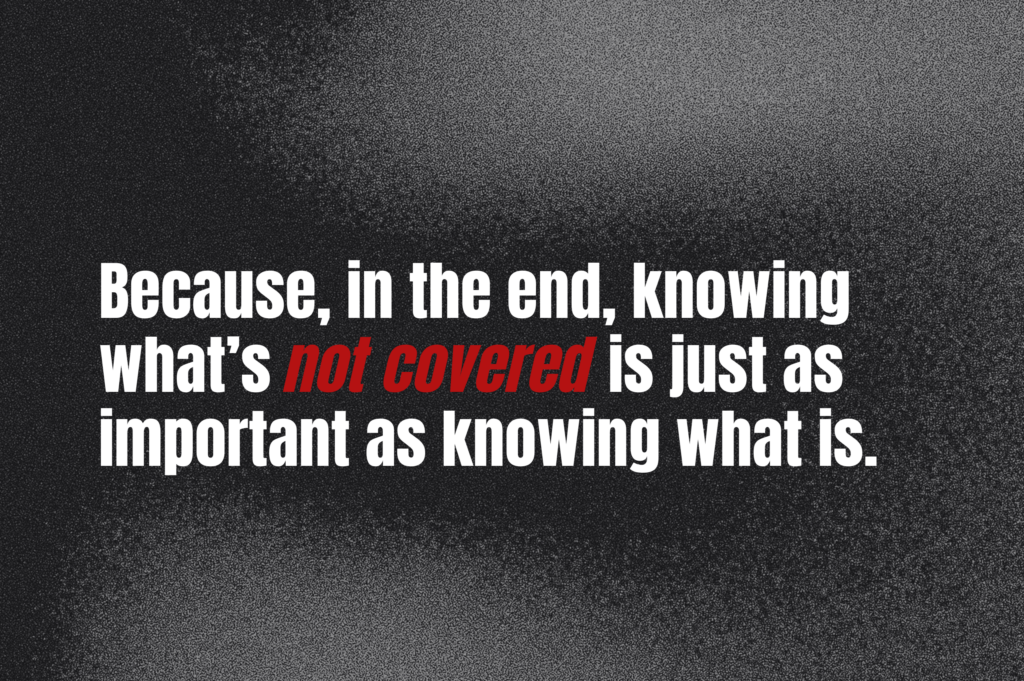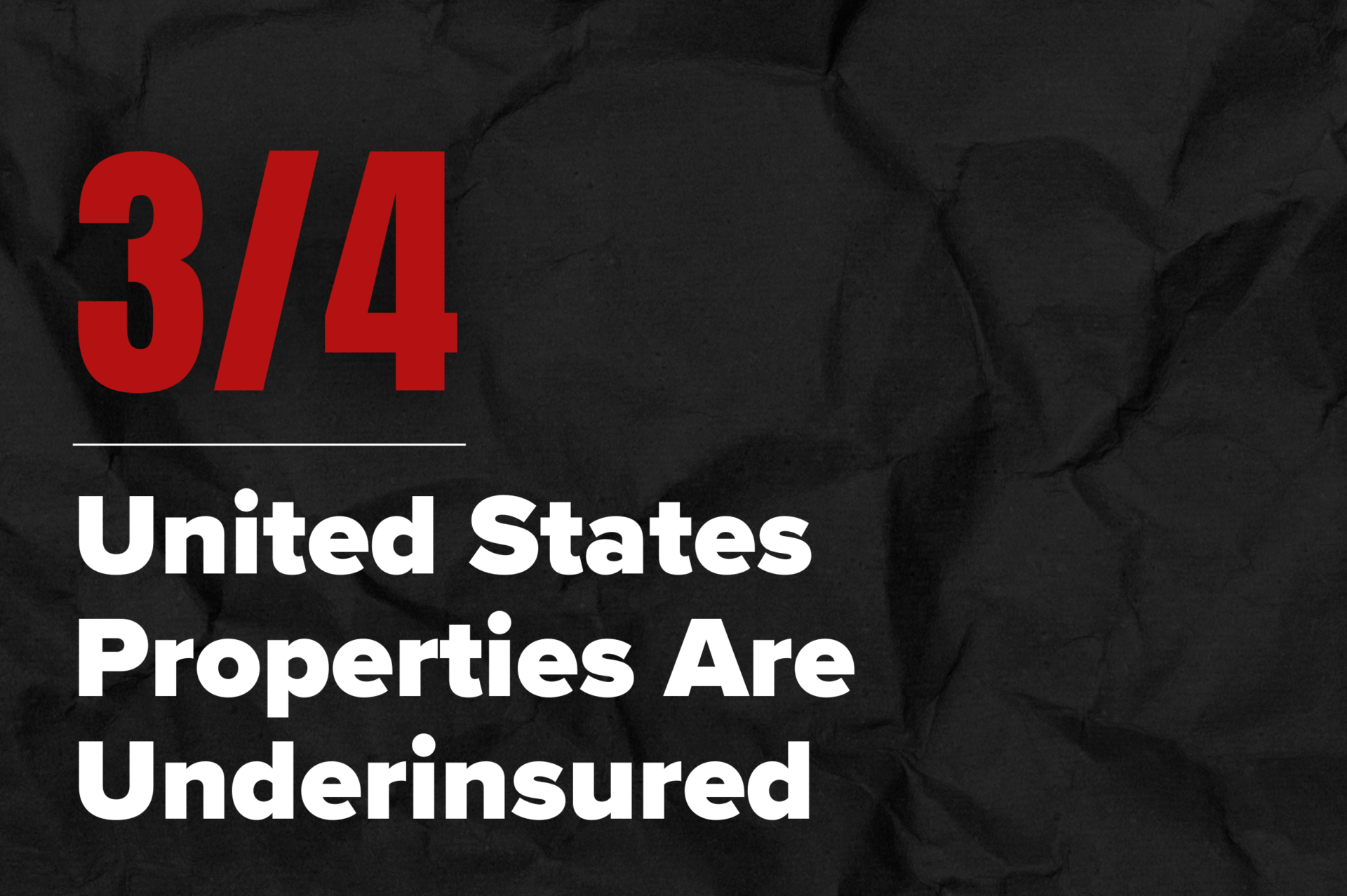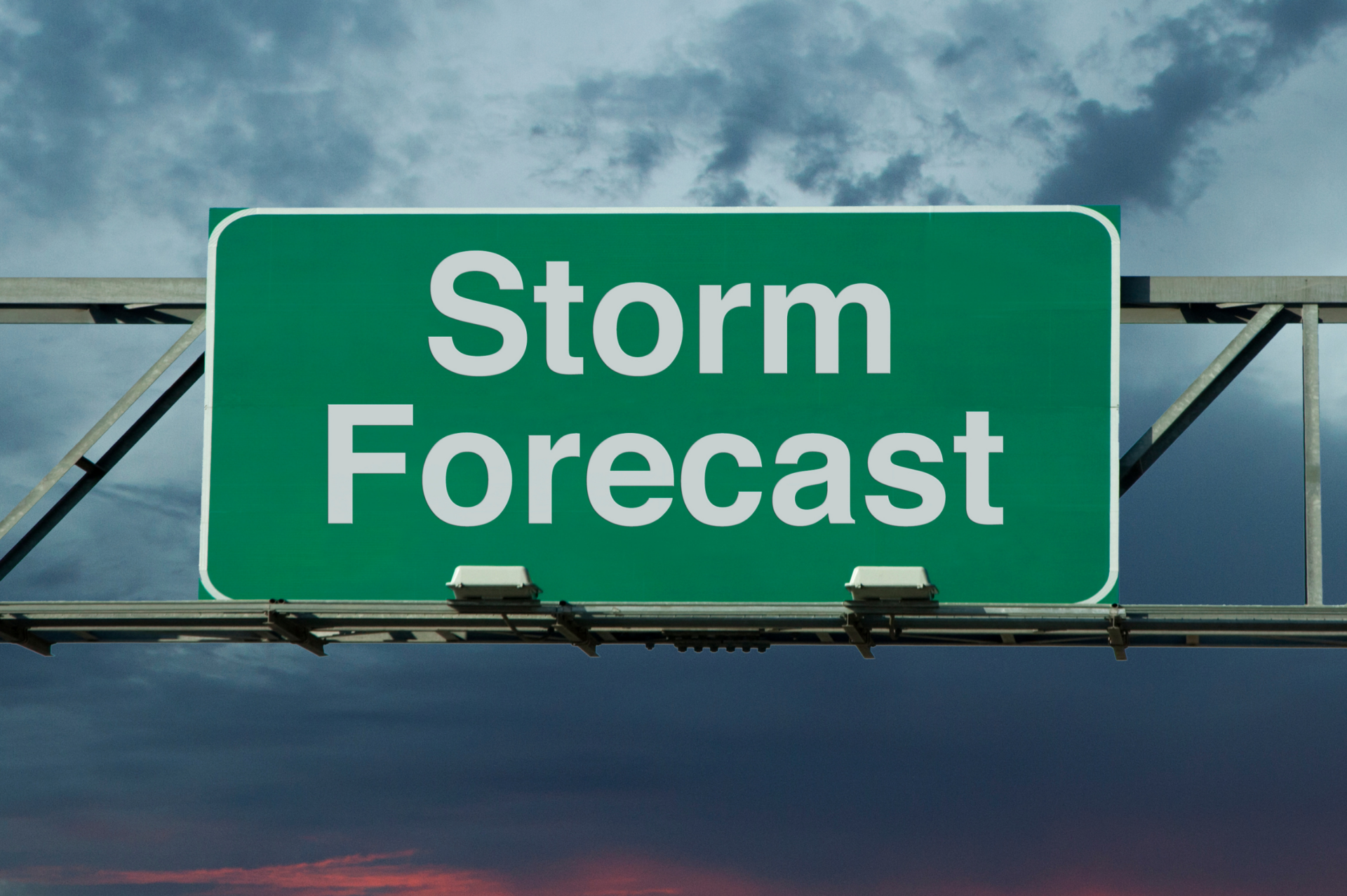Understanding Policy Exclusions is Your Best New Year’s Resolution
As the year winds down and we start thinking about everything we want to change or improve in the new year—like exercising more, mastering new skills, or decluttering our homes—why not add one more goal to your list? How about gaining a solid understanding of your insurance policy and learning what’s covered? Believe it or not, policy exclusions can be a significant blind spot, and they can leave you in the lurch when the unexpected happens.
So, What Are Policy Exclusions?
Policy exclusions are specific conditions or situations that your insurance policy does not cover. Think of them as the “not-so-fun” fine print in a contract. Policy exclusions specifically outline what is and is not covered and help define the policy’s scope of protection. Understanding these exclusions may help you avoid nasty surprises and, ultimately, can help you make better decisions regarding additional coverage or preventive measures.
Why Do Policy Exclusions Exist?
Why are exclusions even a thing? Can’t insurance carriers cover everything? Great questions! Here’s why insurers include exclusions in their policies:
-
-
- Risk Management: Exclusions help insurers avoid covering highly likely events or risks that could result in massive losses (and higher premiums). It’s all about managing the risk pool.
- Premium Control: Insurers keep your premiums more affordable by excluding certain events. After all, who wants to pay sky-high rates for coverage they’ll never need?
- Clarity and Transparency: Exclusions help define what is and isn’t covered, hopefully reducing confusion and potential disputes.
- Encouraging Risk Mitigation: Some exclusions, like those for neglect or maintenance issues, are designed to encourage policyholders to take proactive steps to prevent damage.
-
The Most Common Exclusions You Should Know About
As you reflect on your insurance needs heading into the new year, it’s crucial to be aware of the most common exclusions in insurance policies. In regions prone to storms, one would expect insurance policies to be tailored to the risks property owners may face. Unfortunately, it’s become more and more common for exclusions to be added to policies from one term to the next. Ashley Workman, Sr Paralegal and Licensed Public Adjuster, has found an increasing number of exclusions in Florida policies.
Here are a few exclusions that can catch you off guard:
1. Natural Disasters
Events like floods, earthquakes, and hurricanes are often excluded from standard homeowners’ insurance policies. If you live in an area prone to these, make sure to purchase additional coverage or a separate policy.
2. Wear and Tear
Damage caused by the gradual deterioration of property over time—like an aging roof or plumbing issues—often isn’t covered. Insurers exclude this to avoid covering damage that regular maintenance could have prevented.
3. Negligence
If you fail to maintain your property or take reasonable precautions to prevent damage (for example, ignoring a known leak), you might find your claim denied. Preventative care can save you from the headaches of negligence exclusions.
4. Acts of War or Terrorism
Most policies exclude damage from war or terrorism. Special coverage may be required if you’re concerned about these risks.
5. Intentional Acts
Insurance doesn’t cover damage caused intentionally by you or someone acting on your behalf. It’s all about preventing fraud.
6. Government Action
Government actions, such as property seizures or destruction for development.
How to Tackle Policy Exclusions
So, how can you ensure that you’re properly covered despite these exclusions? Here are a few proactive steps you can take as you head into the new year:
-
-
- Review Your Policy: Now is the perfect time to sit down with your insurance policy and thoroughly review it. If anything is unclear or if you don’t understand an exclusion, reach out to your insurance agent for clarification.
- Assess Your Risks: Reflect on what could happen to you in the coming year and check if those risks are covered. This way, you’ll know whether you need to purchase additional coverage, like flood insurance or earthquake coverage.
- Maintain Your Property: Keeping up with regular maintenance and timely repairs can help prevent damage that may be excluded due to negligence. A proactive approach can save you from a headache down the road.
- Stay Informed: Insurance policies can evolve from one policy period to the next, so it’s important you keep an eye on updates and potential changes to your policy and coverage.
-
A New Year’s Resolution You Can’t Afford to Miss
As we wrap up the year and start thinking about our resolutions for the new year, let’s make one of those goals to understand your insurance policy. It’s a small effort that can make a huge difference in managing your risks and ensuring your protection. Take the time now to review your exclusions, ask questions, and make sure your coverage is up to snuff for 2025.

Policy exclusions may seem like a boring detail in the grand scheme of things, but they can have a huge impact when things go wrong. By understanding these exclusions and proactively addressing them, you can confirm that your insurance coverage actually has your back. So, make it a point this year to tackle your policy exclusions head-on. The new year is the perfect time for a fresh start—why not start with your insurance?
"*" indicates required fields


